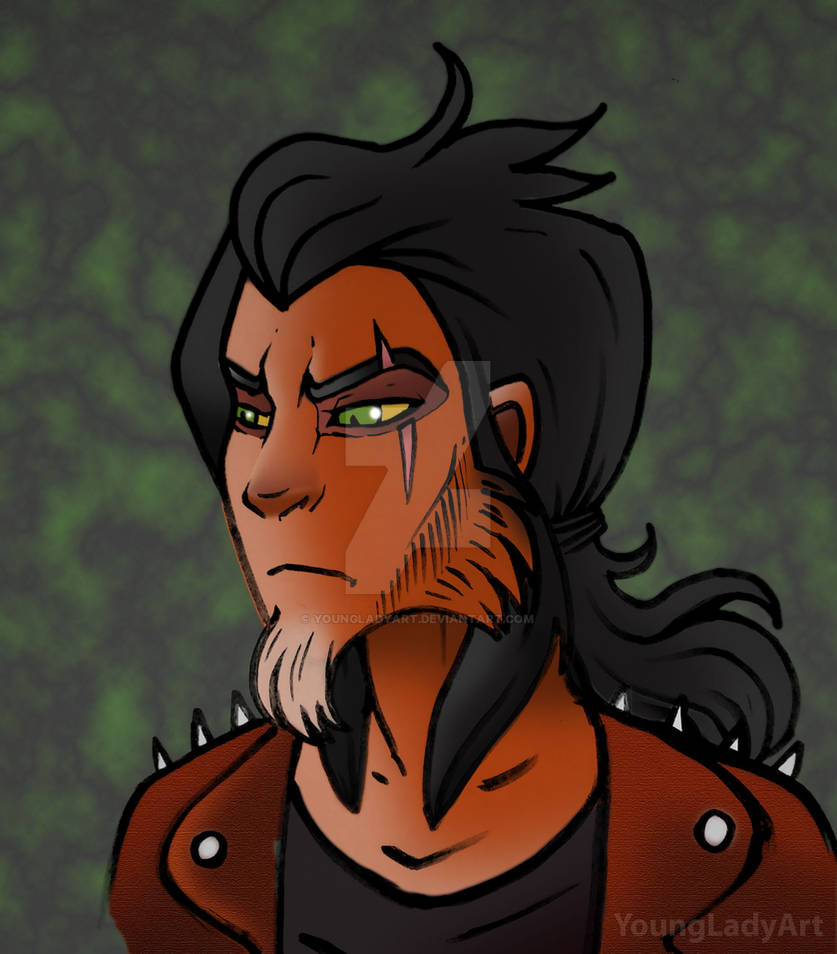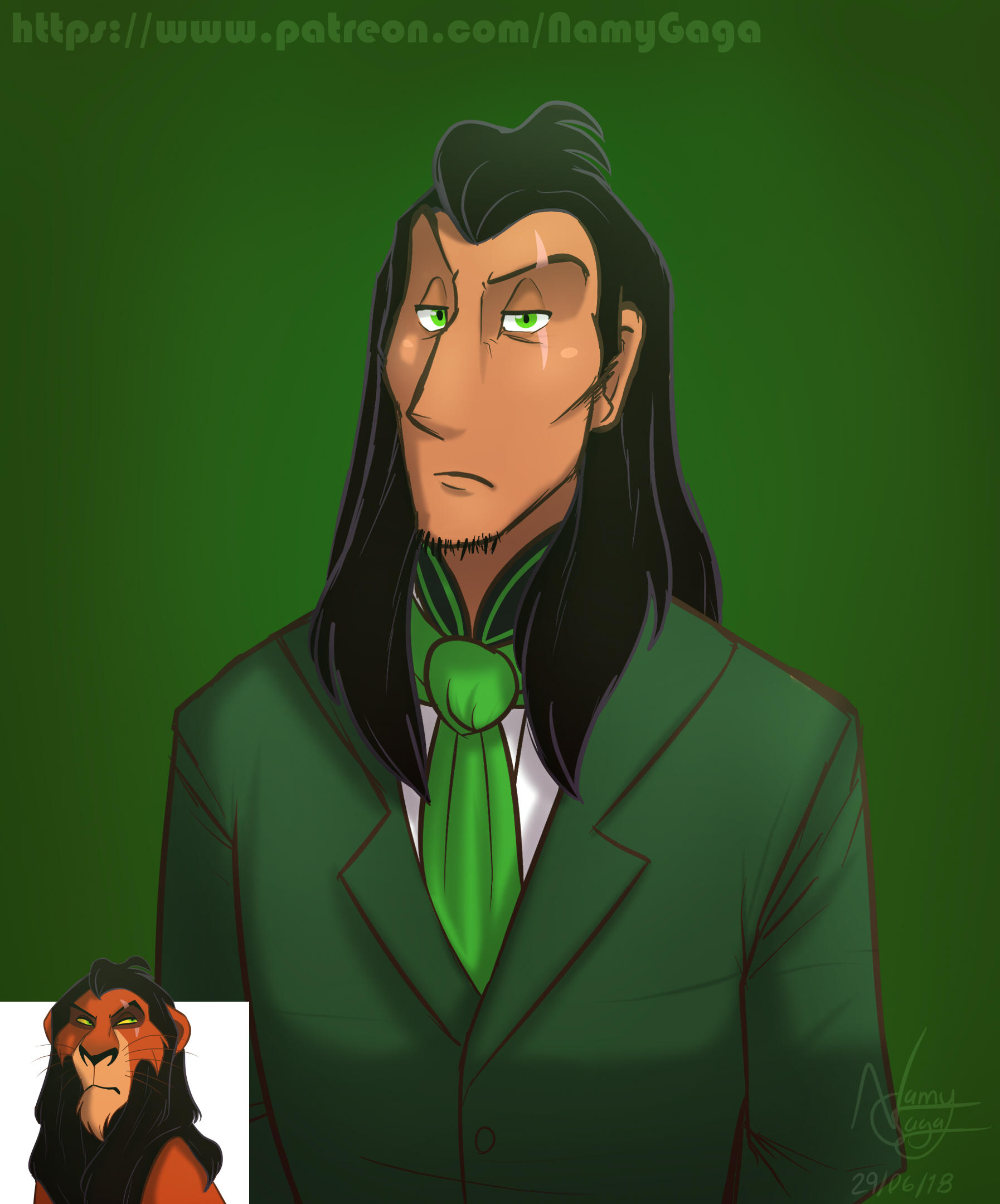
The DISNEY VILLAINS Art Jam!!!! by CGPintor on deviantART Disney
Imagine, Surgery Without a Scar. A new study shows that a 20-year-old drug prevents scarring in mice. If it works on humans, it could change the lives of those with disfiguring wounds. A test of.

Human!Scar x Reader (Lion King) by Jazzdemo on DeviantArt
Slice a potato into medium thick rounds. Using a circular motion, rub the potato slice on your scar. Once the potato slice starts to dry out, discard it and continue rubbing with another slice.

Human Scar Lion King by Stylouz Cosplay disney
The normal healing process in human tissue results in a scar. Scars occur when tissues have been significantly damaged and cannot be repaired with like tissue. Multicellular animals, particularly those with organs, have had to develop this means of survival and repair rather than replacement with like tissue due to the complex tissues that are.

Human Scar disney crossover Photo (34654048) Fanpop
Many scars will fade without treatment. Keloids and depressed (sunken) acne scars, however, won't fade. As you age, depressed acne scars tend to become more noticeable as your skin loses its firmness. Treatment can help fade scars more quickly. If you have a keloid or depressed acne scar, treatment can make it less noticeable.

Humanized Scar by klutzydani on DeviantArt
Recent Advances: Scarring in humans is the end result of the wound healing process, which has evolved to rapidly repair injuries. Wound healing and scar formation are well described on the cellular and molecular levels, but truly effective molecular or cell-based antiscarring treatments still do not exist.

Villain5 Scar kurohoshi218artoc Illustrations ART street
In vivo models of human scars provide the possibility of investigating molecular, cellular, and structural processes involved in the formation of scars. 73-78 In addition, these models allow the study of different time points in the scar formation process 77 and are generally applied in the study of the formation of normotrophic scars.

Scar human form Scar lion king, Disney fan art, Lion king art
A scar is the body's natural way of healing and replacing lost or damaged skin. A scar is usually composed of fibrous tissue. Scars may be formed for many different reasons, including as a result of infections, surgery, injuries, or inflammation of tissue. Scars may appear anywhere on the body, and the composition of a scar may vary.

Scar human version by YoungLadyArt on DeviantArt
Scars can be classified into immature scars and mature scars. Mature scars can be "normal," atrophic, or hypertrophic. Keloids occur in patients with a genetic predisposition and behave differently than hypertrophic scars, although there can be a continuum in terms of appearance.

Human Scar by *rollingrabbit on deviantART Disney fan art, Disney
Medical name: Cicatrix What it looks like: While you will eventually see a flat scar, when this scar first appears it tends to be pink to reddish in color and slightly raised. It may also be itchy or painful. As your skin continues to heal, the scar will flatten and change color. In time, many flat scars are nearly the same color as your skin.

Human Scar by on DeviantArt in 2019 Art
Scar tissue is a collection of cells and collagen that covers the site of the injury. People can develop scar tissue on their skin as the result of an injury, surgery, or acne. Other areas of.

Be Prepared! (Human!ScarxReader) Part 2 by LeFantomeDancer on DeviantArt
3.1. Background. Tissue repair after injury is a complex phenomenon involving intricate and coordinated mechanisms. Even though during the last decade, many studies have increased our knowledge on the different cellular players involved in this process [], many gray areas remain, particularly concerning the dialogue between different cell populations acting during wound healing and scar formation.

TLK Human Scar by NamyGaga on DeviantArt
Public Diseases & conditions A to Z diseases Scars: Who gets and causes Advertisement Scars: Who gets and causes Who gets scars? Nearly everyone gets at least one scar. You may have gotten a scar from a burn, cut, or scrape. Many people see a scar after having surgery. A scar forms when your body heals an injury

Human Scar. Okay this is cool but i must ask what with the random mole
A keloid scar may form within months to years of the inciting injury. Signs and symptoms might include: Thick, irregular scarring, typically on the earlobes, shoulders, cheeks or middle chest. Shiny, hairless, lumpy, raised skin. Varied size, depending on the size of the original injury and when the keloid stops growing.

Scar [Human Version] by chetom on DeviantArt
Verteporfin is a small molecule (molecular weight, 718.8 Da) approved by the Food and Drug Administration (FDA) in 2000 for use as a photosensitizer in photodynamic therapy for the treatment of.

Human Scar from The Lion King source Fantasy
Method All studies in which cutaneous scars are modelling in animals or humans were included. Models that were focused on the wound healing process or those in humans with scars from an existing injury were excluded.

Scar as a human Heros Disney, Disney Villians, Disney Princess Art
A scar (or scar tissue) is an area of fibrous tissue that replaces normal skin after an injury. Scars result from the biological process of wound repair in the skin, as well as in other organs, and tissues of the body. Thus, scarring is a natural part of the healing process.